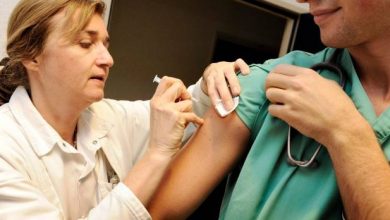
The workload related to drug prescriptions has decreased slightly over the years, going from 72.5 prescription requests per 100 contacts in 2005 to 71.4/100 in 2013; on the contrary, we note an increase in requests for diagnostic investigations
Posted on 1 DECEMBER 2014 by EDITORIAL Iammepress
Florence, 1 December 2014 – In 9 years the workload of Italian family doctors has increased significantly. If in 2005 the average number of contacts per year per patient was 6.9, in 2013 it rose to 8.1, which is equivalent to approximately 35 visits per day.
Those who go to the general practitioner are mostly women, but not from the age of 75 onwards, when men prevail. These are the main data contained in the VIII Health Search Report of the Italian Society of General Medicine and Primary Care (SIMG), presented in Florence during the 31st National Congress of the Scientific Society. The research involved 900 white coats which made it possible to aggregate the data of over 1 million and 200 thousand Italians. “Health Search – explains Dr. Claudio Cricelli, SIMG president – is a tool that has evolved to offer a cross-section of the effects of treatment interventions, essential for promoting the Clinical Governance of the system.
By doctor-patient contacts we mean outpatient visits that end with the recording of a diagnosis, a pharmaceutical prescription, a diagnostic-instrumental investigation or any other intervention recorded in the computerized medical record". Among diseases that generated the highest number of contacts, uncomplicated hypertension is the most represented (15.2% of total contacts in 2013), followed by type II diabetes mellitus (5.4%) and dyslipidemia (3.8% ). Considering gender differences, it can be seen that the workload linked to depression and osteoporosis is higher for women, while that due to ischemic heart disease is higher for men.
“It is crucial – explains Dr. Ovidio Brignoli, SIMG vice president – maintain active observation points that allow the activity of family doctors to be measured. The workload analysis, present in the Health Search Reports since 2010, is attracting great interest among both general practitioners and health policy experts. These analyzes have provided objective data on the constant increase in the number of contacts per patient, which represents one of the main causes of the increase in work stress, with potential consequences also on the quality of assistance”.
The workload related to drug prescriptions has decreased slightly over the years, going from 72.5 prescription requests per 100 contacts in 2005 to 71.4/100 in 2013; on the contrary, there is an increase in requests for diagnostic-instrumental and laboratory investigations (from 26.5/100 contacts in 2005 to 28.1/100 in 2013) and in requests for specialist visits and hospitalization (from 13.8 /100 contacts in 2005 to 14.6/100 in 2013).
The Report estimates the average number of annual visits that the doctor carries out for the management of a specific pathology (contacts/patient/year). The results of this analysis show that in 2013 the pathologies that required more than 5 contacts/patient/year are, in order: ischemic heart disease (8.55), Parkinson's disease (7.79), diabetes mellitus type II (7.65), atrial fibrillation (7.54), type I diabetes mellitus (7.11), uncomplicated hypertension (6.89), congestive heart failure (6.32), neurological disorders (5, 40), complicated hypertension (5.09), mood disorders (5.06). The data reported in the VIII Report shows a growing trend in the prevalence of arterial hypertension which varies from 21% in 2005 to 26.7% in 2013, with considerably higher estimates in women than in men.
From the analyzes carried out, a constant increase in prevalence is recorded for many pathologies, determined by various factors, including the ability of the family doctor to make early diagnoses, in the presence of early symptoms. In addition to hypertension, in the years 2005-2013 ischemic stroke increased from 2.2% to 3.8%, ischemic heart disease from 3.5% to 4.1%, type II diabetes mellitus from 5, 9% to 7.7%, COPD from 2.5% to 3%, asthma from 3.6% to 6.9%, depression from 3.4% to 45.5%, osteoarthritis from 14.1% to 17.4%, dementia from 1.3% to 2.5%, benign prostatic hypertrophy from 9.7% to 14%, and gastroesophageal reflux disease from 6.2% to 15.3%. If type II diabetes mellitus is growing mainly in males, asthma shows a greater increase in females.
SIMG





